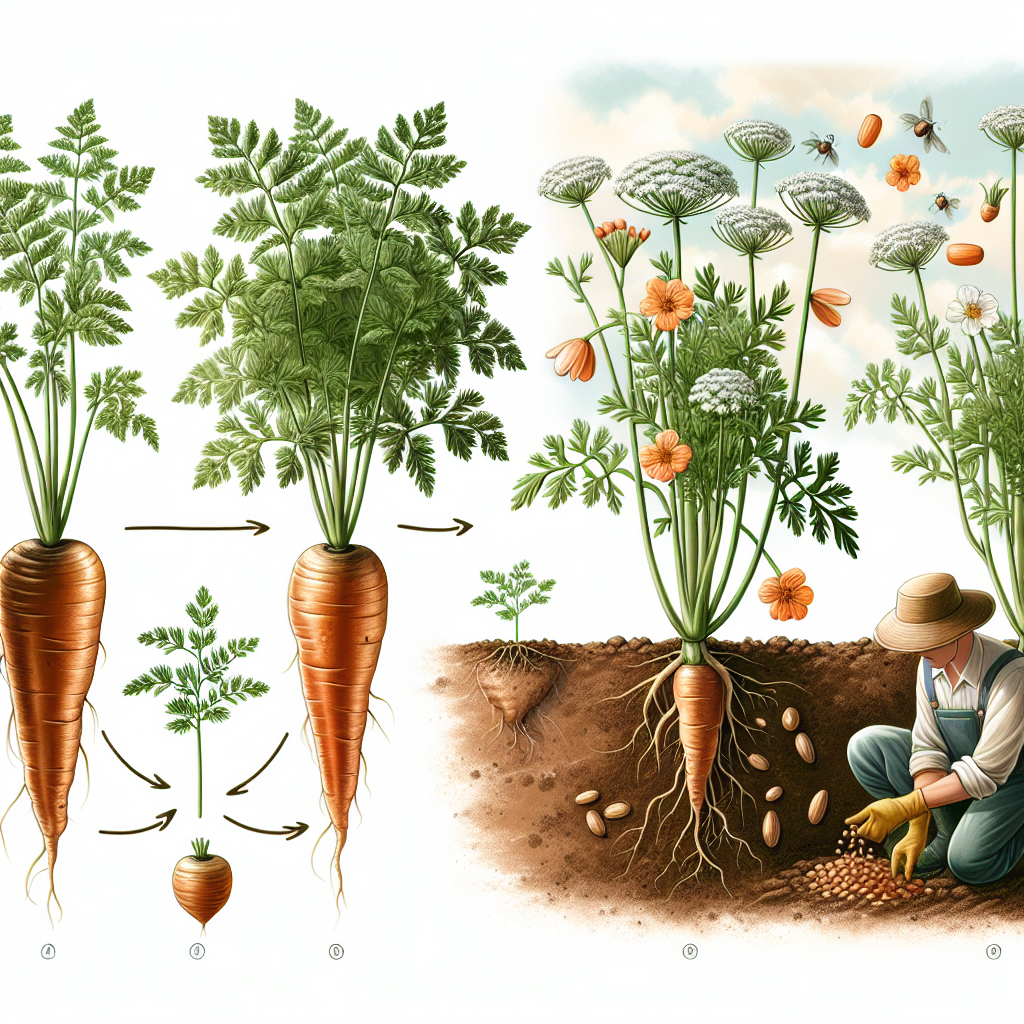
How to reproduce carrots
Introduction to Carrot Reproduction
Carrots, scientifically known as Daucus carota, are a popular root vegetable loved for their sweetness and versatility in various dishes. While many gardeners focus on growing carrots for their delicious roots, understanding how to reproduce carrots can open new avenues for cultivation, ensuring continuous supply and even seed production. In this article, we'll explore the different methods of carrot reproduction, the necessary conditions, and best practices for achieving success in your carrot garden.
Understanding Carrot Life Cycle
To effectively learn how to reproduce carrots, it’s essential first to understand their life cycle. Carrots are biennial plants, meaning they typically complete their life cycle over two growing seasons. Here's a breakdown of their life cycle:
- Year One: In the first year, carrots develop the edible taproot, which is harvested. The plant focuses on growth above ground and storing energy in the root.
- Year Two: If allowed to overwinter, the carrot will grow foliage again in the second year and develop flowers. After pollination, these flowers will yield seeds.
Methods of Reproducing Carrots
Carrots can be reproduced primarily through two methods: sexual reproduction (via seeds) and asexual reproduction (vegetative methods). Let's delve into both methods in detail.
Sexual Reproduction: Seeds
The standard method for reproducing carrots is through seeds. Here’s a step-by-step guide:
- Seed Selection: Choose quality seeds from a reputable source to ensure strong plants. Look for varieties that are suited to your growing conditions.
- Sowing Seeds: Sow seeds directly into the soil in early spring or late summer, as carrots thrive in cooler weather.
- Soil Preparation: Ensure the soil is well-draining, loose, and rich in organic matter. Consider tilling and adding compost to improve soil health.
- Thin The Seedlings: Once seedlings emerge, thin them out to prevent overcrowding, allowing enough space for the roots to grow.
- Harvesting Seeds: If you're interested in saving seeds, allow some carrots to flower and bolt in the second year. The flowers will eventually develop into seed heads. Harvest these when they turn brown and dry.
Asexual Reproduction: Relying on Root Cuttings
A unique method of reproducing carrots is through root cuttings. Although not a common practice, it can be effective under certain conditions. Here’s how you can do it:
- Choose Healthy Roots: Select thick, healthy carrot roots from the first year. Avoid roots that show signs of disease or damage.
- Cutting Preparation: Cut the carrot roots into sections of about 2-3 inches. Make sure each section has a viable growing tip.
- Planting the Cuttings: Plant the cuttings horizontally in well-prepared soil at about 3-4 inches deep.
- Watering and Care: Water the cuttings well and maintain soil moisture until new shoots begin to emerge.
- Transplanting: Once the new shoots develop, you can thin or transplant them to their final location.
Optimal Conditions for Carrot Reproduction
To enhance your chances of successfully reproducing carrots, certain environmental factors need to be considered:
Soil Requirements
Carrots prefer sandy loam soils that drain well. High clay content can lead to deformed roots. Here are key soil tips:
- A pH between 6.0 and 6.8 is ideal.
- Incorporate compost or well-rotted manure for nutrient-dense soils.
- Ensure the soil is tilled to at least 12 inches deep to facilitate proper root growth.
Light and Temperature
Carrots love full sun, requiring at least 6-8 hours of direct sunlight daily. Temperature plays a crucial role in germination and growth:
- Optimal soil temperature for carrot seed germination ranges from 55°F to 75°F.
- Carrots can tolerate light frost, but excessive heat can cause them to bolt prematurely.
A Common Mistake: Bolting
One challenge when learning how to reproduce carrots is dealing with bolting. Bolting occurs when the plant flowers prematurely due to stressors like heat. A few tips to prevent bolting include:
- Provide consistent moisture by watering regularly.
- Avoid planting during peak summer heat.
- Mulching can help maintain soil temperatures.
Pest and Disease Management
No garden is without its challenges, and carrot reproduction is no exception. Here are common pests and diseases to watch out for:
- Carrot Flies: These pests can damage roots. Employ row covers during peak activity.
- Nematodes: Soil-borne nematodes can weaken plants. Crop rotation helps mitigate this.
- Leaf Blight: A fungal infection that can hinder growth. Ensure good air circulation and remove affected foliage immediately.
Harvesting Carrots For Seed Production
If your aim for reproducing carrots includes seed production, knowing when and how to harvest is crucial:
When to Harvest Seeds
The ideal time to harvest carrot seeds is when the seed heads turn brown and dry, usually in late summer. Here’s what to do:
- Observe the seed heads; they should be fully matured.
- Cut the seed heads off on a dry day and place them in a paper bag.
- Allow them to dry further before threshing and collecting the seeds.
Storing Seeds
Once you have harvested your seeds, it's important to store them correctly:
- Keep seeds in a cool, dry place in airtight containers.
- Label each container with the date and variety for future reference.
- For optimal viability, use them within 2-3 years, as carrot seeds can lose their germination ability over time.
Conclusion
Knowledge of how to reproduce carrots not only broadens your understanding of horticulture but also enables you to enjoy an abundant supply of fresh carrots every season. Whether you are cultivating them for their roots or seeds, applying proper techniques and adhering to optimal growing conditions is essential to success. Happy gardening!
By Guest, Published on September 25th, 2024